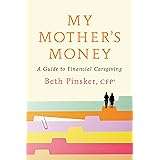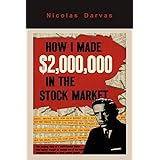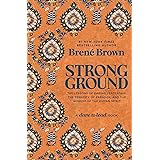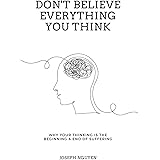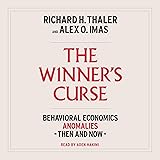As the accompanying video skillfully illustrates, the enduring allure of gold as a critical component within a sophisticated investment portfolio remains undiminished. While many assets have risen and fallen, gold consistently demonstrates its unique capacity to preserve wealth and provide a hedge against systemic instability. For discerning investors, particularly those in Malaysia navigating an increasingly complex global financial landscape, understanding the intricate dynamics of gold investment is paramount.
The 30% surge in value of a 15g gold necklace, purchased at RM5,000 in 2024 and valued at RM7,000 just a year later, is not merely an isolated anecdote; it is a vivid indicator of gold’s potential during periods of market uncertainty. This appreciation underscores the asset’s powerful appeal during times when traditional financial instruments may falter. Diving deeper into gold’s historical context and its multifaceted role in modern finance reveals why this precious metal frequently shines as a beacon for capital preservation.
Gold’s Enduring Legacy: From Ancient Currency to Modern Asset
For millennia, gold served not just as an adornment but as the very bedrock of economic systems, a tangible representation of wealth. In the 19th century, the British Empire pioneered the gold standard, effectively tying the value of its currency, the pound, directly to a fixed quantity of gold bullion. This system soon became the international norm, with most major nations adopting similar protocols by the turn of the century, fostering a period of relative global financial stability.
However, the seismic economic dislocations of the 1930s Great Depression exposed critical vulnerabilities in this rigid system. Governments, desperate to stimulate collapsing economies and fund recovery efforts, found their hands tied by the finite supply of gold. They required the flexibility to print more money than their gold reserves permitted, leading to a gradual abandonment of the gold standard as countries sought monetary autonomy.
Following the devastation of World War II, a new global monetary order emerged with the 1944 Bretton Woods Agreement, which famously pegged major international currencies to the US dollar, which in turn was convertible to gold at a fixed rate of $35 per ounce. This pivotal agreement effectively cemented the US dollar’s position as the world’s reserve currency, providing a semblance of stability for decades. Nonetheless, the substantial financial burden of the Vietnam War in the 1950s and 1960s compelled the US to deplete significant portions of its gold reserves, ultimately leading President Richard Nixon to unilaterally end the Bretton Woods system in 1971. This landmark decision ushered in the era of fiat currency, where money’s value is derived from government trust and legal tender status rather than direct convertibility to a physical commodity like gold.
The Safe-Haven Appeal of Gold: A Beacon in Financial Storms
The inherent limitations of fiat currencies, being susceptible to governmental policies and inflationary pressures, periodically amplify the appeal of alternative stores of value. It is precisely during moments of profound economic or geopolitical instability that gold consistently demonstrates its unrivaled safe-haven properties. Consider the turbulent period of the 1997 Asian Financial Crisis, which witnessed the precipitous collapse of Southeast Asian currencies, including the Malaysian Ringgit. While regional stock markets plummeted and widespread panic led to bank runs, gold prices remained remarkably resilient, preserving capital for those who held it.
Furthermore, the 2008 Global Financial Crisis, arguably the most severe economic downturn since the Great Depression, offered another compelling demonstration of gold’s counter-cyclical strength. As major stock markets worldwide shed half their value and numerous financial institutions teetered on the brink of collapse, investors instinctively sought refuge in gold, driving its price to surge an impressive 48% within a single year. Similarly, the onset of the COVID-19 pandemic in 2020 triggered global market freefalls, causing investors to swiftly adopt a risk-off posture and flock towards safe-haven assets, with gold once again proving its mettle.
These historical episodes vividly illustrate gold’s role as a financial shock absorber. Unlike paper assets, gold carries no counterparty risk, meaning its value is not reliant on the solvency or performance of a particular institution or government. Its intrinsic value, perceived scarcity, and universal acceptance contribute to its stability during periods when confidence in conventional financial systems erodes. Gold effectively acts as an alternative repository of wealth, independent of national economic cycles and political vagaries.
Central Banks and Geopolitical Shifts: A New Driver for Gold Demand
Beyond individual investor behavior, significant shifts in global geopolitics are profoundly influencing the institutional demand for gold, particularly among central banks. A pivotal moment occurred in early 2022 following the Russia-Ukraine War, when G7 countries imposed unprecedented sanctions on Russia, including exclusion from the SWIFT payment system and the freezing of over $280 billion in foreign assets. This drastic action sent shockwaves through the global financial community, fundamentally altering how central banks perceive the security and reliability of holding fiat currency reserves.
In response, numerous central banks, from Poland and Turkey to India and China, have significantly accelerated their gold acquisition programs. They are strategically adding hundreds of tonnes of gold to their national reserves, as observed in 2022 alone, with a clear mandate to diversify away from purely foreign fiat currencies. This strategic pivot serves as an insurance policy, designed to protect national economies against the potential for similar sanctions or the weaponization of financial systems in future geopolitical confrontations. Consequently, nations like Uzbekistan, Portugal, and the United States now hold over 74% of their total reserves in gold, signaling a broad-based structural shift towards this historically stable asset.
This increasing institutional demand creates a robust floor for gold prices, reflecting a collective desire for financial sovereignty and resilience in an unpredictable world. As a result, the value proposition of gold is strengthened not only by individual speculative interest but also by the long-term, strategic decisions of powerful sovereign entities. The “perfect storm” of slowing global growth, escalating geopolitical tensions, persistent inflation concerns, and ongoing trade disputes, such as the US tariff wars, all converge to create an environment where gold’s appeal as a sovereign hedge is further amplified.
Optimizing Your Portfolio: How Gold Fits In for Diversification
For investors seeking to construct resilient portfolios, the strategic inclusion of gold is often justified by its diversification benefits, especially its low correlation with traditional asset classes like stocks and bonds. Consider a hypothetical scenario from 2016 over a decade, involving four investors each allocating RM10,000. Investor B, who committed fully to the S&P500, achieved the highest average annual return, approximately 14%. However, this stellar performance came with a significant caveat: a higher standard deviation, or volatility, of ±15%. This means that while the average return was impressive, actual yearly returns fluctuated widely, staying between -2% and +29% about 70% of the time, and ranging from -17% to +44% in 95% of all observed periods.
Conversely, Investor C, who maintained a balanced portfolio of 50% S&P500 and 50% gold ETF, achieved comparable long-term returns but with a notably lower standard deviation. This portfolio’s yearly returns typically stayed within a tighter range of -3% to +24% for 70% of the time, and between -8% to +35% for 95% of the time. This comparison beautifully illustrates gold’s role as a portfolio stabilizer; it may slightly temper growth during bull markets but significantly cushions downturns, leading to a smoother investment journey over the long run. The less volatile nature of the diversified portfolio can help investors “stay invested” through turbulent times, avoiding panic selling.
It is important to note that a 100% gold allocation, as demonstrated by Investor D, historically delivered a much lower return than a diversified approach and surprisingly exhibited volatility almost on par with a pure equity portfolio. This highlights that while gold is an excellent diversifier, it performs optimally when integrated as part of a broader, multi-asset strategy rather than serving as the sole investment. A truly diversified portfolio balances assets that behave differently across various economic cycles, providing a synergistic effect where assets compensate for each other’s weaknesses.
Malaysian Investor’s Perspective: Gold Beyond Traditional Assets
Malaysian investors often question the necessity of gold when they already hold significant investments in local staples like the Employees Provident Fund (EPF), Amanah Saham Bumiputera (ASB), or real estate. While EPF has consistently delivered respectable and government-guaranteed annual returns of 5-6%, and ASB offers similar robust performance for Bumiputera investors, these assets share a common vulnerability: their strong ties to the domestic economic performance, interest rate policies, and national political stability. When the Malaysian economy faces headwinds, or interest rates fluctuate, the performance of these cornerstone investments is inevitably impacted.
Property, although offering potential for long-term capital appreciation and rental income, introduces issues of illiquidity, significant transaction costs, and currently faces a slowdown in capital growth, with rental yields typically hovering around 3-5%. The reliance of these traditional Malaysian investments on the health of the local economy means that during periods of national economic distress, such as the potential impact on EPF dividends due to the Petronas and Petros dispute, their collective value can diminish. This situation highlights the inherent risk of an overly concentrated portfolio, even if diversified across different local asset classes.
Gold, conversely, offers an uncorrelated hedge against such localized economic and political risks. Given Malaysia’s gold reserves constitute only 2.81% of its total national reserves—a stark contrast to the US at 75%—individual gold holdings can provide a crucial safeguard. A strategic allocation to gold, whether physical or via exchange-traded funds (ETFs) such as GLD from the US or 0828EA from Malaysia, can effectively hedge against potential Ringgit depreciation or broader global economic chaos, offering a layer of protection that traditional Malaysian assets cannot fully provide.
Unpacking Gold’s Price Dynamics: Supply, Demand, and Macro Factors
The price of gold is not arbitrarily determined; it is a complex interplay of supply-side stability and multifaceted demand drivers, further influenced by broader macroeconomic conditions. The supply of gold is notably inelastic; virtually all gold ever mined, an estimated 216,000 tonnes, still exists today, with annual new mining operations and recycling contributing only marginal increments to this fixed global stock. Crucially, gold cannot be “printed” like fiat currency, ensuring its scarcity inherently preserves its value over the long term, making it a reliable store of wealth.
On the demand side, gold is sought after by diverse sectors globally. Jewelry demand constitutes the largest portion, approximately 45% of the market, primarily fueled by cultural traditions in nations like China and India. Industrial demand, though smaller, accounts for gold’s use in various electronic components due to its superior conductivity and resistance to corrosion. Investment demand, making up about 22%, comes from both retail investors and institutions acquiring physical gold or gold ETFs. This segment is driven by a combination of fundamental diversification needs and occasional speculative hype, particularly during rallies.
Moreover, the strength of the US dollar exerts a significant influence on gold prices, given that gold is universally traded in the American currency. A weaker US dollar renders gold comparatively cheaper for international buyers using other currencies, thereby stimulating demand and pushing prices higher, as observed during periods of waning investor confidence in US economic policy. Furthermore, gold prices historically correlate with inflation expectations; as the purchasing power of fiat currency erodes due to rising prices, gold becomes a more attractive asset for preserving value. Conversely, when central banks like the US Federal Reserve signal intentions to lower interest rates, it diminishes the appeal of yield-bearing assets such as bonds, consequently redirecting capital towards non-yielding assets like gold, which then typically experiences price appreciation.
Expert Outlooks and Strategic Considerations for Gold Investment
Predicting the precise trajectory of gold prices is inherently challenging, as evidenced by the divergent forecasts from leading financial institutions. Goldman Sachs, for instance, projects gold to reach $3,700 per ounce by the close of 2025, while JP Morgan anticipates an even higher $4,000. In stark contrast, Morningstar presents a more bearish outlook, suggesting a potential 38% drop over the next five years, driven by a belief that supply could eventually outpace demand. This wide spectrum of expert opinions underscores the unpredictable nature of current global markets and the complexities involved in valuing gold.
Investors should approach these forecasts with a degree of healthy skepticism, recognizing that analysts often become more bullish during uptrends, potentially influencing market sentiment rather than purely reflecting fundamental value. While gold has proven its merit as a time-tested diversification asset, the timing of entry into the market is a critical consideration. Investing in gold when prices are at or near all-time highs, driven by short-term hype, may dilute its long-term strategic benefits. The primary purpose of gold in a portfolio is often to reduce overall volatility and act as a hedge, rather than solely to capture short-term price gains.
Furthermore, it is crucial to remember that gold is a non-productive asset; it does not generate income, dividends, or rent like businesses or properties. Its return is entirely dependent on future demand and someone’s willingness to pay a higher price. Despite this, gold holds profound cultural significance for many Malaysians, deeply embedded in traditions from wedding gifts to festive celebrations, ensuring a consistent local demand. While Malaysia’s official gold reserves are relatively modest at 2.81% of total reserves, a personal allocation of gold within an individual portfolio can serve as a potent hedge against Ringgit depreciation and broader global economic instability.


